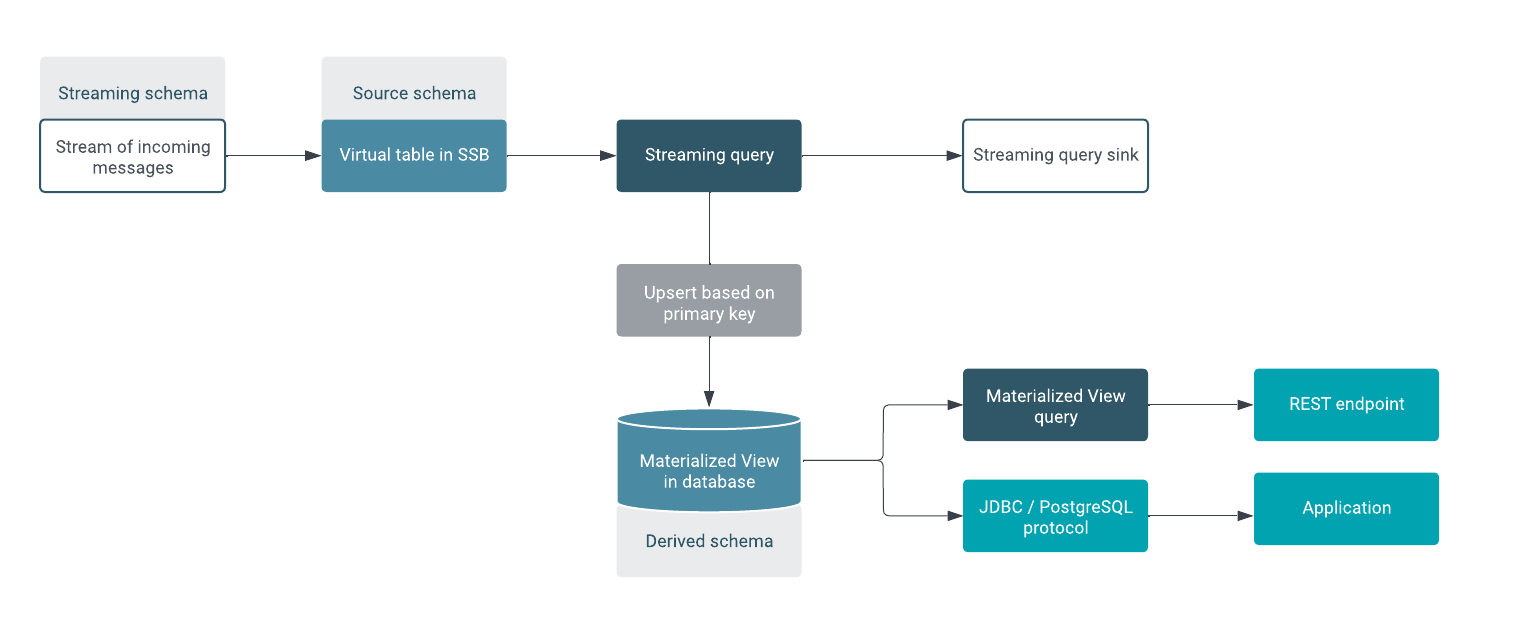Introduction to Materialized Views
SQL Stream Builder (SSB) has the capability to materialize results from a streaming SQL query to a persistent view of the data that can be read using REST API/endpoints. Business Intelligence tools and applications can use the Materialized View REST endpoint to query streams of data without deploying database systems. In addition to REST, Materialized Views can also be queried using JDBC/ PostgreSQL wire protocol.
Materialized Views are in synchronization with the mutating stream - they are updated by a primary key as data flows through the system. The data is updated by a given key, and it represents the latest view of the data by key. The following illustration shows the process of a Materialized View query in streaming SQL.

The following schemas are defined in the illustration:
- Streaming schema: refers to what SSB knows from the source provider, for example Kafka
- Source schema: refers to the schema of the table defined by the catalog in SSB
- Derived schema: refers to the schema of the Materialized View that is created in the database as a result of the streaming query against the catalog table
For example: vehicleID Z latest latitude and longitude is X and Y. As the vehicle moves, the latitude and longitude for the vehicleID are updated . The primary key is defined at creation time and is immutable.
Materialized Views can be created as mutating snapshots of the queried data result that is updated by a given key. The data is always the latest representation of itself by key (analogous to a primary key in most RDBMS systems).
You can query the Materialized Views using a GET request over REST, which returns a JSON response as "Content-Type: application/json". The queries are not defined at query time. Rather, they are curated, saved, and granted access through the Cloudera platform. You can configure a REST endpoint to query the Materialized View. Multiple query conditions can be created to allow various ways to query the same data. This is sometimes referred to as a 'pull query'.
Null Keys
In situations where information about a specific item is updated incrementally, for example, data about something is received in multiple messages, there may be keys missing from the incoming messages (for example, the streaming schema). In this case SSB continues to consume these messages, but marks the missing key as NULL at the sink, therefore SSB will also update the Materialized View with an upsert including the NULL values. To change this behavior, the “ignore null” option can be used, which tells SSB to update the relevant record only with the non-null values of the incoming message. Similarly, when a key is removed from the source schema, but not from the streaming schema, SSB ignores the key on the stream of incoming messages.
